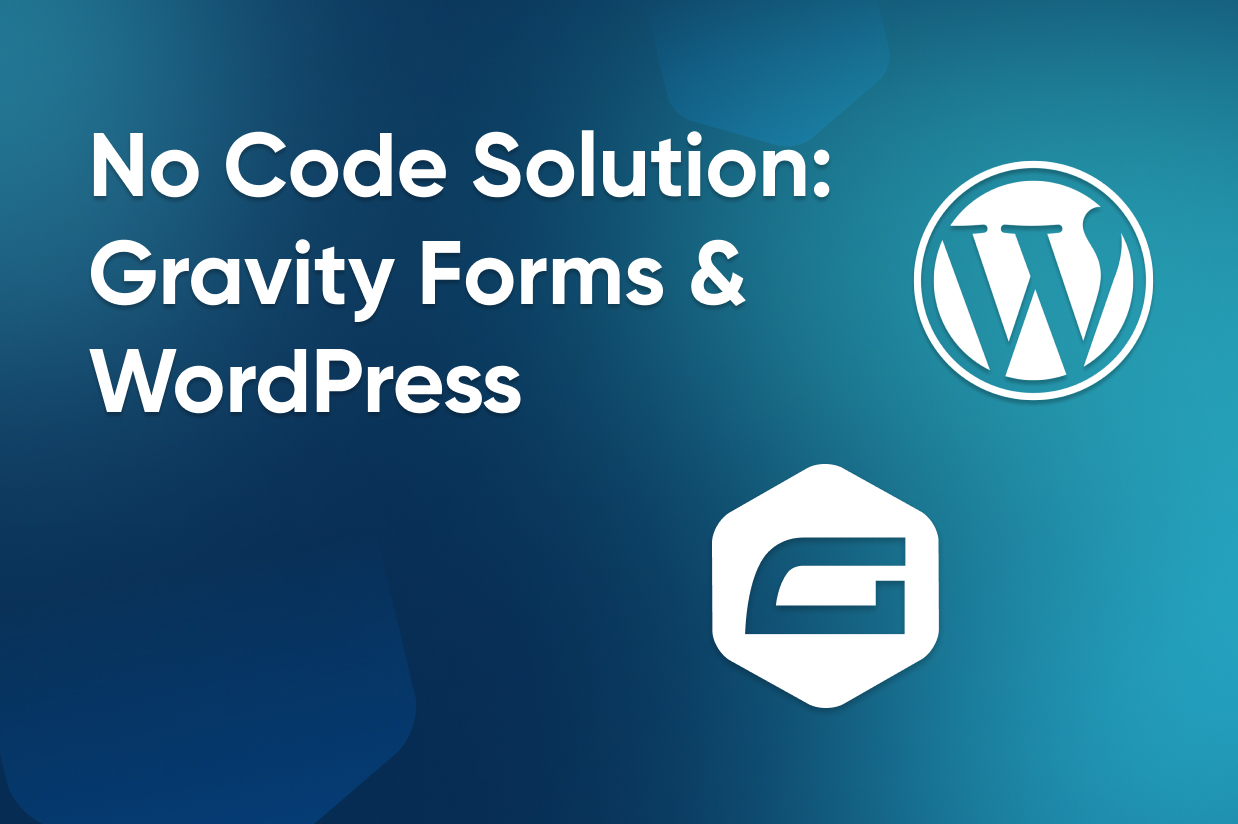No-code Solution: Gravity Forms and WordPress

Over the past two decades, WordPress has evolved from a simple blogging platform to a powerful content management system that powers millions of websites around the world.
In its early days, WordPress was primarily used by developers to create custom websites for clients. It required knowledge of HTML/CSS/PHP along with how the template system worked for WordPress. Tip-toeing around functions.php is where many of us spent our time customizing a theme.
However, as the platform matured, it slowly became a no-code solution that allowed non-developers to create and manage websites like a more traditional “no-code” hosted solution.
The Evolution of WordPress as a No-code Tool
Non-developers were empowered by WordPress-centric features like shortcodes, the customizer panel, and widget-based themes, which gave us our first taste of drag-n-drop theme design. We were peering into the future of how themes work today, and didn’t even realize it.
End users started to enjoy a vast amount of themes & plugins which served as the turn-key solution they required.
Need a complete real estate listing website? WordPress + custom post types & fields had you covered.
How about a business directory where users could register on the website and create their own listings? Gravity Forms + WordPress, again, had you covered.
With the introduction of the Gutenberg editor in WordPress 5.0, users can now create and design complex layouts using a drag-and-drop interface. This makes it easier than ever for non-developers to build custom websites that meet their unique needs.
Patterns fast-track us to designing page layouts that once required a hard coded template file to render. Blocks provide us precise control over the shortcodes and widgets from the past.
The way I see it, WordPress and its expansive ecosystem has served as a no-code tool before no-code tools were cool. And while it might not be as “cool” or “exciting” for some to use WordPress in the face of today’s technology, it is a familiar platform that provides plenty of options and a generous community to support it.
Achieving No-code Status
In recent years, the boom in no-code hosted solutions has further cemented WordPress’s position as a go-to no-code solution.
Platforms like Bubble, Flutterflow, and Adalo are great, but once you’re locked into their platform, you’re kinda stuck. WordPress remains as the leading “portable” stack, where major features can be swapped out in place of new plugins, with the flexibility to change hosting providers. Viva open source!
Tools like Gravity Forms have made it possible for non-developers to create complex forms and surveys, collect payments, and manage user registrations, all without writing a single line of code.
Here are three things you can build using WordPress and Gravity Forms in a no-code fashion:
- Custom Contact Forms: Every website needs a way for visitors to get in touch. With Gravity Forms, you can easily create custom contact forms to collect information from your website visitors. The drag-and-drop interface makes it easy to add fields like name, email, and message, as well as more complex fields and features like file uploads and conditional logic. Once you’ve created your form, you can embed it on any page of your website through our Gravity Forms block.
- Online Surveys: If you need to collect data from your website visitors, Gravity Forms can help. With the Survey Add-On, you can create custom surveys with a wide range of question types, including multiple choice, rating scales, and text fields. You can also use conditional logic to show or hide questions based on the respondent’s answers, making your surveys more personalized and engaging.
- Ecommerce Solutions: Gravity Forms also has a number of robust ecommerce add-ons that allows you to sell products and services directly from your website. With these add-ons, you can create custom order forms, integrate with payment gateways like PayPal, Stripe, and Square, and even create coupons and discounts to encourage sales. This makes Gravity Forms a great choice for small business owners and entrepreneurs who want to sell products and services online without having to hire a developer.
WordPress: A No-code Alternative
WordPress has come a long way over the past two decades, and its evolution into a no-code solution has made it possible for non-developers to create and manage highly-functional websites with ease.
When combined with plugins like Gravity Forms, WordPress becomes even more powerful, allowing users to solve complex solutions without having to write a single line of code.
This is why I love the combination of WordPress + Gravity Forms.
It empowers individuals to build the website they desire. It empowers someone to start a side gig servicing nonprofit clients helping them achieve their donation goals. It can serve as a source of education & opportunity for large groups of people to learn more about publishing on the web.
The next time you want to take that shiny new no-code app for a spin, don’t forget to see what Gravity Forms and WordPress can do for you first.

If you want to keep up-to-date with what’s happening on the blog sign up for the Gravity Forms newsletter!